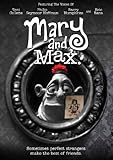From Vulture.com, NYmag:
The Bridge and the End of Asperger’s on TV
By John Elder Robison
Watching Diane Kruger dive head-first into the awkward, by-the-books Texas detective she portrays on FX’s The Bridge on Wednesday night, I suspected I was witnessing the last of a kind. For reasons I’ll explain shortly, we have entered the post-Asperger’s era of television, and the intense Sonya Cross may well be the final character with that condition who’ll get grandfathered into the new age.
Because Asperger’s, a developmental disorder that falls on the autism spectrum, came out on television quietly, it’s hard to say for certain when the condition made its prime-time debut. But I do know when I first took notice of a character with the disorder: in December 2005, when Boston Legal introduced us to Jerry Espenson, the quirky, socially awkward attorney played by Christian Clemenson. Many viewers noted that, as depictions of what it’s like to live with Asperger’s, Jerry and the brilliant but difficult Dr. Spencer Reid from Criminal Minds were exaggeratedly and unrealistically — a better word might be crummily — drawn. But still, these characters had an impact. Quite sneakily, like a raccoon rearranging the pantry, things began to change and awareness of the disorder grew.
The tipping point in the mainstreaming of Asperger’s arrived in 2007 with the high-functioning, haughty and hilarious theoretical physicist Sheldon Cooper and The Big Bang Theory. As the show was a hit, winning two Emmy Awards for actor Jim Parsons in the process, characters with symptoms resembling Asperger’s syndrome poured out of our television screens and infected our brains: Dr. Dixon on Grey’s Anatomy, Max Braverman on Parenthood, Abed on Community, and seemingly countless others. Almost overnight, Asperger’s had become a shorthand TV trope used to explain and excuse a character’s maddeningly inconsiderate genius.
I was diagnosed with Asperger’s a decade before these portrayals started cropping up, and for the longest time, I was alone, the only Aspergian I knew. Not anymore. In the span of just six years and countless utterances of “woof!” Asperger’s has gone from being unknown to being ubiquitous. And I don’t just mean on TV: Asperger diagnoses in the real world have skyrocketed in that same stretch of time.
The uptick in Asperger cases led to some mild hysteria. People started getting scared. Wild accusations and stupid questions were bandied about. Do televisions cause Asperger’s? What about its programming? Is there a vaccination I can have? What about lead supplements? No one knew. But we insiders did know this: If Big Bang Theory aired on a Monday, you could count on more than a few parents bringing their kids in for an Asperger diagnosis on Tuesday.
And so the CDC swooped in to do studies, and legislators convened. Time passed. Optimists hoped TV bigwigs would police the situation on their own. Finally, the American Psychiatric Association sprung into action. “We can solve this problem,” they effectively said. “It’s so simple: Let’s get rid of Asperger syndrome!” And they did just that. May 18, 2013, with the publication of the fifth edition of the APA’s industry-standard Diagnostic and Statistical Manual of Mental Disorders (DSM-5), was the last day that Asperger’s existed as a distinct psychiatric classification. From that day forward, any newly diagnosed patients who would have previously been classified with Asperger’s syndrome would be designated with the tag of Autism Spectrum Disorder, or ASD, the rejiggered catchall category for autism and other pervasive developmental disorders.
Just like that, Asperger’s was gone. You can do things like that when you publish the rules. Like corrupt referees at a rigged college football game, the APA removed Asperger’s from the field of play and banished the term to the locker room of psychiatric oblivion. Their new and improved DSM went on sale two months ago, and shrinks everywhere lined up to buy it. Meanwhile, my 2007 memoir about living with Asperger’s is now deemed diagnostically obsolete. (Luckily, consumers don’t know that!)
Conveniently, the new classification lets television producers off the hook. Any current TV character ascribed with Asperger’s-like symptoms can no longer inspire real-world diagnoses of Asperger’s, and television can no longer be blamed for the real-world overdiagnosis of the condition. Because, as you now know, Asperger’s no longer technically exists. All you can get now is an ASD diagnosis, and who’d want that? What kind of cache could a three-letter acronym possibly have? None. And I checked the records: As of today, not one single person has reported catching ASD from a television. The fix seems to have worked.
TV is now forced to adapt to this new, Asperger’s-free reality. But this week, with the debut of The Bridge, we met Sonya Cross, who, like those of us veterans who identify as having Asperger’s, is already an anachronism, developed as she was before the term for the condition Kruger has been name-checking in the press was rendered obsolete. So in a way, The Bridge is a kind of period piece, like a movie about female hysteria, but that’s not going to stop me from enjoying it or Kruger’s serious, realistic depiction of Asperger’s.
I suspected that she would be rendered with care, because the showrunners hired my friend Alex Plank to be their Asperger consultant (perhaps he will now have to change his business card). Like me, he is an adult with Asperger’s. He, too, got his Asperger diagnosis while you still could — before those shrinks pulled it out of the catalogue. He parlayed his own eccentricity into a website — Wrong Planet — that has become the biggest Asperger site going, and now advises networks like FX. Judging by the veracity of Kruger’s portrayal, his instruction seems to be working. Yet although the character in the Swedish/Danish show that The Bridge is based on has Asperger’s, and Kruger has discussed the disorder in interviews, not one character on the FX series makes mention of the word.
The timing couldn’t be more ironic, of course. Sheldon and Abed, those simple geeks and freaks, are harmless stars of situation comedies, successfully designed to make you laugh — but don’t reflect what having Asperger’s is like. And other dramas have yet to portray the struggles adult Aspergians go through with accuracy. But Sonya Cross is a different animal entirely. She’s serious. She’s smart. She’s beautiful. She’s a hardworking, by-the-book Aspergian cop who is misunderstood by her peers yet genuinely confused when people are put off by her.
In other words, there’s finally an Asperger’s character we can identify with at the very moment she can no longer be called that.
John Elder Robison is the New York Times best-selling author of Look Me in the Eye, Be Different, and Raising Cubby. A free-range Aspergerian, he lives in western Massachusetts among family, animals, and machines.




